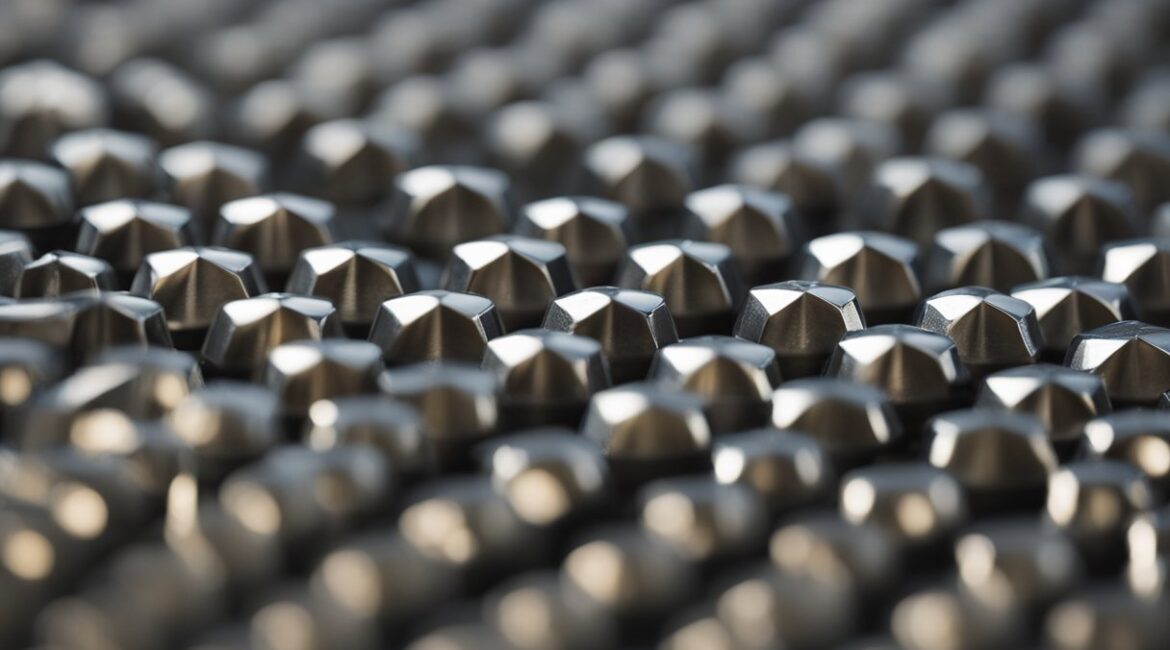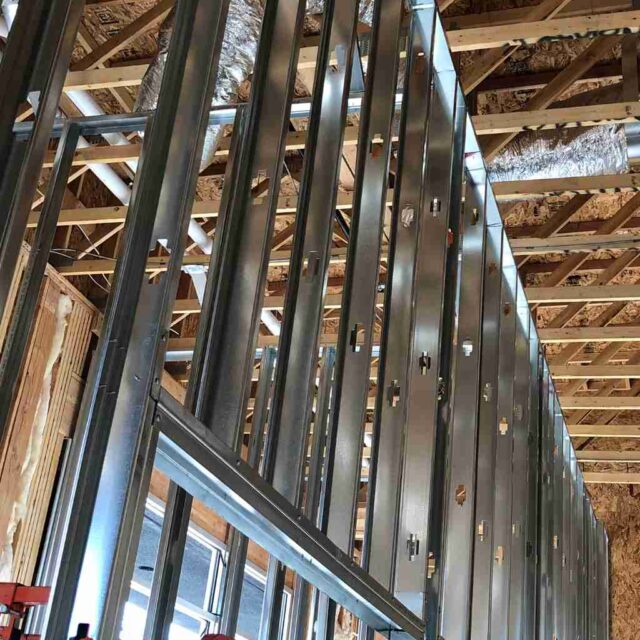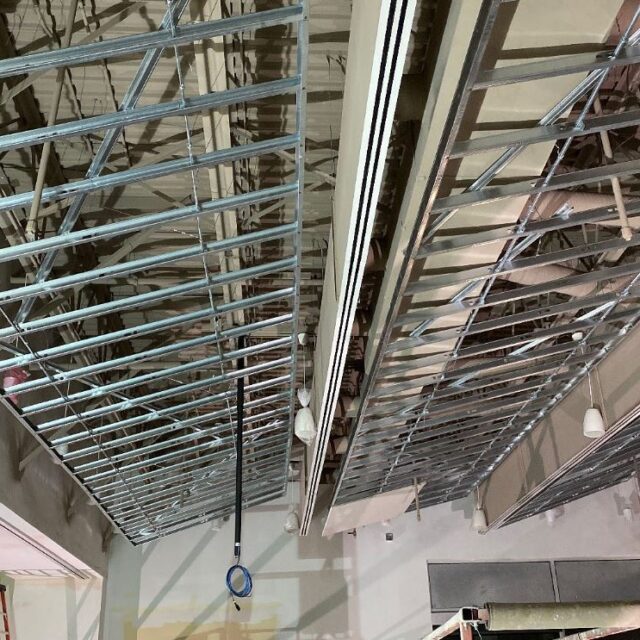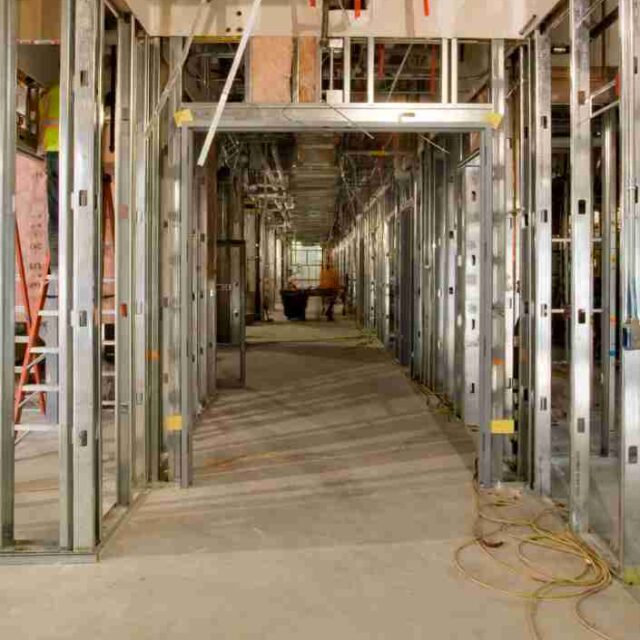When considering the materials for constructing a building frame, you might wonder why steel studs are often touted as a superior choice to traditional wood framing. Steel studs provide distinct advantages that can benefit both the construction process and the longevity of your structure. Unlike wood, steel is impervious to rot, pests, and moisture, which contributes to a longer lifespan and reduced maintenance concerns for your building.
Your choice in framing material also has implications for safety and stability. Steel studs are non-combustible, reducing the risk of a structural fire and potentially lowering insurance premiums. Furthermore, because steel is stronger than wood, it can withstand extreme weather conditions and seismic events more effectively, offering a sense of security for regions prone to such occurrences.
Sustainability is another factor where steel studs outperform wood. If you are looking to make environmentally responsible choices, consider that steel studs are typically made from recycled materials and are themselves 100% recyclable at the end of their use. This cycle of reuse stands in contrast to wood framing, which often requires the cutting of trees and may contribute to deforestation and habitat loss.
Durability and Resistance
When comparing steel stud framing to wood framing, your focus on durability and resistance is crucial. Steel provides advantages in several key areas.
Corrosion Resistance
Steel studs are often coated with protective materials, such as zinc, that inhibit rust and corrosion. Galvanized steel, in particular, can withstand humid or coastal environments that would typically compromise wood frames.
Fire Resistance
Steel framing possesses a significantly higher melting point than wood. Classified as non-combustible, steel can greatly enhance the fire resistance of a building, providing extra safety compared to traditional wood framing.
Pest and Mold Resistance
Pests and mold present less of a threat to steel studs than wood. Steel is impervious to termites and other wood-boring insects. Additionally, it does not retain moisture, which helps prevent mold growth, providing a healthier environment for you.
Strength and Stability of Steel stud framing
When comparing steel studs to wood framing in Calgary, your primary considerations should include how they measure up in terms of structural integrity and load-bearing capacity.
Structural Integrity
Steel studs boast superior resistance to warping, splitting, and shrinking, all issues commonly faced with wood framing due to moisture and temperature changes. Furthermore, steel provides robust protection against pests such as termites that can compromise the structural soundness of wood.
Load-Bearing Capacity
Your steel-framed structure is likely to handle heavier loads over a longer span than wood framing. This is because steel studs have a higher strength-to-weight ratio, ensuring that your building’s walls can support more weight, both vertically and horizontally.
Environmental Considerations
When evaluating the environmental aspects of steel stud versus wood framing, you’ll find that steel possesses distinct advantages in terms of recycling potential and thermal efficiency.
Recycling Potential
Steel studs offer a considerable recycling advantage. Unlike wood, steel can be recycled indefinitely without a loss of quality. The Steel Recycling Institute states that steel is the most recycled material on the planet. When a building is decommissioned, your steel studs can be melted down and reused for a wide array of new products, thus reducing waste and the environmental impact of extracting new resources.
Thermal Efficiency
In terms of thermal efficiency, steel studs have a higher thermal resistance when properly insulated. They fit well with rigid foam or other types of insulation that result in a higher R-value—a measure of thermal resistance—compared to wood. Using steel studs in your construction leads to better energy efficiency, reducing the building’s carbon footprint and your energy costs over time.
Construction Efficiency
In the realm of construction, steel stud framing has standout advantages in terms of efficiency compared to wood framing.
Speed of Installation
You’ll find that steel studs are lighter than wood and come with pre-cut holes for wiring and plumbing, which can significantly speed up the installation process. The units are manufactured to be consistent in size and shape, allowing for rapid assembly. Moreover, steel studs are often screwed together, which is quicker than using nails.
- Predictable material delivery: Since steel studs are manufactured in controlled factory settings, they are typically delivered on time and ready for immediate use.
- Reduced labour costs: Fewer workers can install more steel studs in less time compared to wood framing, due to the ease of handling and uniformity.
Precision and Quality Control
Steel studs offer a high degree of precision due to their manufacturing process. They are produced under strict quality control measures, which means they are consistently straight and true, reducing the effort required to ensure walls are level and corners are square.
- Dimensional stability: Unlike wood, steel does not warp, twist, or shrink, which ensures the long-term integrity of the structures you build.
- Uniform quality: Each steel stud is virtually identical to the next, leading to a uniformity that enhances the overall finish of your project.
Cost Effectiveness
When considering framing options, your budget is paramount. Steel studs offer distinct cost advantages over wood framing, primarily due to their long-term savings and the competitiveness of material costs.
Long-Term Savings
You’ll find that steel studs contribute to significant long-term cost reductions. Their durability ensures a longer lifespan for your structure, with less need for costly maintenance or repairs. Steel’s resistance to rot, insects, and fire also decreases potential repair costs. For example, consider the following points:
- Durability: A steel-framed building can last longer than a wood-framed one, reducing the need for major renovations.
- Insurance Savings: Buildings with steel framing often benefit from lower insurance premiums due to higher durability and fire resistance.
- Energy Efficiency: Steel studs are often paired with better insulation solutions, leading to lower energy bills over time.
Material Costs
While the initial purchase price of steel studs can be higher than wood, market fluctuations often influence the cost of wood more severely than steel. Here are specific cost-related factors to consider:
- Price Stability: Steel prices tend to be more stable, while lumber is subject to wide price swings influenced by market demand and logging industry regulations.
- Waste Reduction: Steel studs are often produced to exact lengths, meaning less on-site waste. Any excess steel can be recycled efficiently, potentially offering you some cost recovery.
By considering the total expenditure over time and the factors that influence material costs, steel studs can prove to be a cost-effective choice for your construction needs.
Design Flexibility
Steel studs provide increased design flexibility for your projects, allowing for more innovative and efficient use of space.
Architectural Versatility
You can achieve a variety of architectural designs with steel studs that might be challenging with wood framing. Their strength allows for larger spans and cantilevers, giving you the freedom to create wide, open spaces without the need for intermediate supports. This attribute is particularly beneficial for modern, minimalist designs that require clean lines and unobstructed views.
- Strength-to-weight ratio: Superior to wood, allowing for more design options.
- Customization: Can be manufactured to meet specific design requirements.
Space Utilization
Utilizing every inch of your space is crucial, and steel studs can be pivotal in this aspect. They are generally thinner than wooden studs, which means they take up less space, providing you with more usable square footage.
- Wall thickness: Steel studs maintain structural integrity with thinner profiles.
- Interior space: You gain additional interior space for insulation or utilities without compromising on structural strength.
Using steel studs offers you enhanced design flexibility and maximizes space utilization, two crucial factors in the success of your building projects.
Regulatory and Code Compliance
When you are considering steel studs over wood framing, it is imperative to assess their compliance with building codes and regulations. Steel framing adheres to strict manufacturing standards, which means the material properties and dimensions are consistent and reliable.
Regulations may favour steel in areas prone to fire hazards or pest infestations, as it is inherently resistant to both. In terms of fire compliance, steel is non-combustible, providing an added layer of safety and potentially leading to reduced insurance costs.
Compliance with seismic codes is another area where steel studs excel. Their flexibility and strength make them suitable for earthquake-prone regions, providing higher resilience against seismic forces compared to wood framing.
Regarding energy efficiency requirements, you may find that cold-formed steel framing can be effectively insulated to meet or exceed standards, and more importantly, the thermal bridging commonly encountered in metal frames can now be mitigated with advanced design techniques and materials.
- Sustainability Regulations:
- Steel is 100% recyclable, contributing to its compliance with green building standards.
- Codes such as LEED reward points for using materials with a high recyclable content.
Your local building code will have a section outlining the exact requirements for metal framing. It is essential to consult it to ensure compliance for your specific project. Additionally, you might need to consider the compatibility of steel with other building systems and materials to assure overall code compliance.
Maintenance and Upkeep
When comparing steel studs with wood framing, the maintenance and upkeep of steel present significant advantages. Steel studs don’t warp, crack, or split, unlike wood, which can be prone to these issues over time due to moisture and temperature changes.
- Durability: Steel is impervious to many of the environmental factors that deteriorate wood. You won’t experience issues like rot, mould, or insect infestations.
- No Need for Treatments: Your steel studs will not require the periodic treatments or preservatives that are often necessary to maintain wood framing’s integrity.
Stability is another highlight. Steel’s dimensional stability ensures that doors and windows operate smoothly for years, without the sticking or jamming that can result from the natural movement of wood.
The longevity of steel also means less frequent replacements, leading to long-term savings. With a non-combustible material, you’re also looking at potentially lower insurance premiums due to improved fire resistance.
Cost Implications
- Initial Costs: While the initial investment in steel might be higher, lower maintenance needs balance this over time.
- Insurance Benefits: Savings on insurance can be substantial, thus influencing your ongoing property costs favourably.
Remember, while steel can be more costly upfront, the reduced upkeep requirements can result in significant savings over the lifespan of a building. It’s important to consider these factors when making your choice between steel and wood.
Frequently Asked Questions
When choosing between metal stud and wood framing, you have to consider various factors such as cost, durability, weight, and usage in specific environments like basements. Additionally, factors like soundproofing capabilities and identifying features in construction are relevant in making an informed decision.
What are the cost comparisons between metal stud and wood framing?
Your initial cost for metal studs may be higher compared to wood framing, but metal offers long-term savings due to its durability and lower maintenance costs. Prices can fluctuate based on the market and region.
Which is more durable, metal or wooden studs?
Metal studs outperform wood in durability. They are impervious to decay, pests, and moisture, which can compromise wood studs over time.
How do metal studs compare to wood in terms of weight?
Metal studs are lighter than wood, making them easier to handle during construction and reducing the overall load on the structure.
Can metal studs be used in a basement setting versus wood studs?
Yes, metal studs can be used in basements. They are especially beneficial in this setting as they are resistant to moisture and mould, problems frequently encountered in basement conditions.
What are the advantages of metal studs for soundproofing over wood studs?
Metal studs can offer superior soundproofing properties. When combined with the right insulation and drywall, they can more effectively reduce sound transmission than wood.
How can one differentiate between metal and wood studs in construction?
In construction, metal studs have a distinct steel appearance and are joined using screws, while wooden studs have a natural wood texture and are typically joined with nails or staples.









